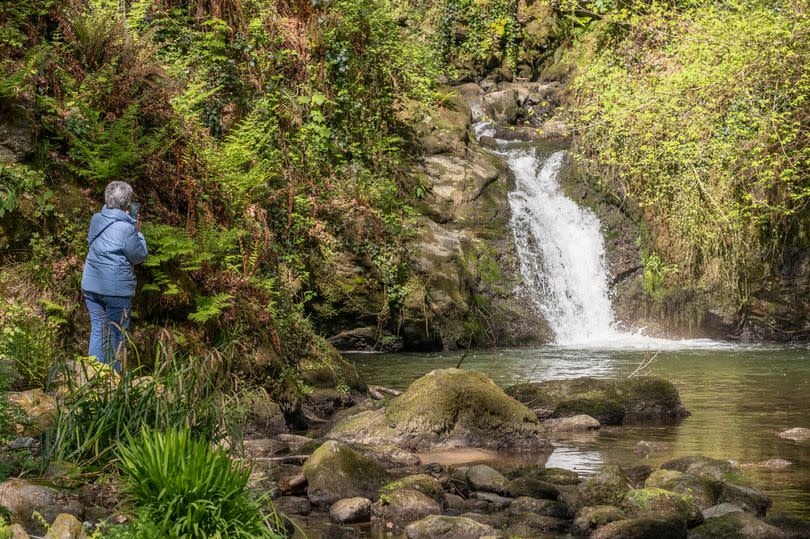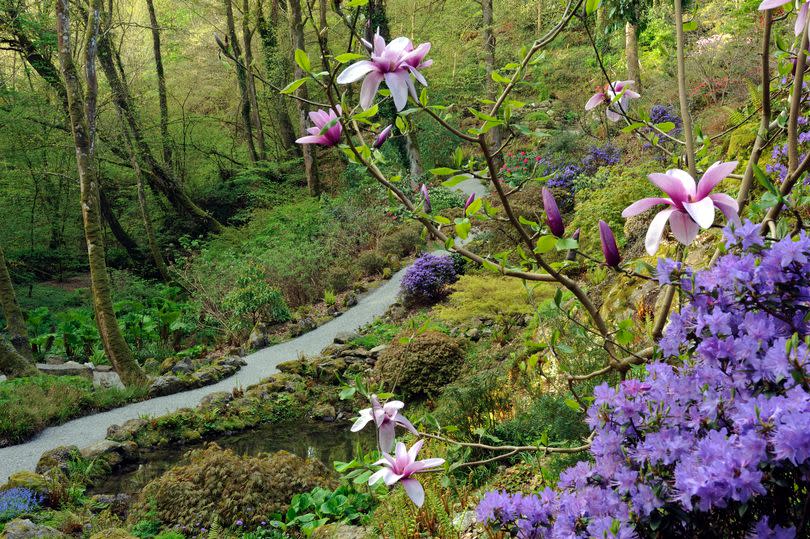The 'secret world' that's just 90 minutes away from Liverpool

A "secret world" is just waiting to be discovered and it's under a two-hour drive away from Liverpool.
Plas Cadnant Hidden Gardens, in Menai Bridge. is described as having a magnetic pull that keeps people coming back once they've discovered it. From the road, there are few hints of the wonders that lie beyond the pillared entrance.
Once inside, travellers will find a series of grottos, follies, dark tunnels and no fewer than four waterfalls. There's also a walled garden, a "jungle" and an avenue of yew pyramids.
For those who appreciate a good view, there are belvederes from which to admire wild woodlands and, in the distance, the rising peaks of Eryri (Snowdonia). When Anthony Tavernor first arrived in 1996, its beauty was hidden beneath almost 70 years of undergrowth.
READ MORE: I found complete tranquillity above a busy Liverpool city centre shop
READ MORE: Life on the street that is one of the last of its kind in the city
Over time, the bushes and brambles were cleared and today, Plas Cadnant Hidden Gardens have become a must-visit in Anglesey for tourists, reports North Wales Live. Recently, Plas Cadnant was voted the nation's favourite public garden in a competition backed by the National Garden Scheme.
And it was named the third top "hidden gem" in Wales based on Tripadvisor reviews, behind only Castell y Bere, Gwynedd, and Insole Court, Cardiff. But perhaps the biggest accolade lies in the number of repeat visitors it attracts: once discovered, the hidden gardens continue to exert a pull.
Anthony, a former farmer from Staffordshire, was himself drawn to the 19th-century estate when he spotted an advert in a magazine. After driving to Anglesey he needed just 20 minutes to look around before making an offer.
He realised early on that the restoration would be a "labour of love". Even after two decades and a devastating flood, he was still passionate enough to restore it all over again. He said: "Visitors think it's called the hidden garden because they can't find us...But it was called that because it was almost totally derelict when I arrived, having been left untouched for decades."
Underneath the thick canopy of laurel and rhododendron lay walled and pleasure gardens dating back to the estate's prime. Plas Cadnant and its gardens were developed in the 19th century by the Price family, local gentry who owned 3,400 acres of land in North Wales.
The house was constructed in 1803 for John Price, Sheriff of Anglesey and agent to the Marquis of Anglesey, whose Plas Newydd seat was only four miles away. The two-acre walled garden soon followed, with the valley and upper woodland gardens coming later.
Anthony added: "The site was near the Bishop's Ferry across the Menai Strait. At the time, Menai Bridge wasn't yet developed as a town until Telford built his suspension bridge in 1826. There's evidence of a settlement at Cadnant since medieval times."
The estate was divided up in the early 20th century and sold off in parcels. By the time Anthony purchased it, he was left with its 200-acre core. The 10 acres of gardens hadn't been touched since the 1940s.
Using vintage photographs and worn Ordnance Survey maps, he pieced together the property's history. From these, he also determined where footpaths ran and where bridges crossed the River Cadnant, providing a blueprint for restoration.
Anthony first tackled the outbuildings, transforming them into holiday cottages to fund the garden renovations. These were done slowly, meticulously and invariably on a tight budget. Once trees and bushes had been cleared away, treasures uncovered included a 1930s tennis court, river stepping-stones and an old mill pool with a weir.
It took him 20 years to discover a vast sloping slab of white quartz he knew must exist only because it was mentioned in a 1919 book. He added: "This is not a chequebook garden...not like some places you see where millions are spent to create an instant garden. I wanted to do it the traditional way, planting small and letting things develop naturally."
One remarkable feature is Plas Cadnant's "catenary curve" stone wall. Strung across a valley enclosed by the walled garden, its graceful curve mirrors the design of the Menai Suspension Bridge.
The garden may have been restored by an Englishman, but it remains defiantly Welsh. Fruit tree cordons include the Bardsey Apple and Anglesey Pig's Snout, and even some of the more exotic plants were grown by local plantsmen and women.
Copper planters are a nod to the Parys Mountain mine near Amlwch on the opposite side of Anglesey. Anthony began offering guided tours and then opened his Hidden Gardens to the public. Before a proper tearoom was opened, early facilities were rudimentary.

He said : "Visitors would come into the house to use its toilet and into the kitchen for tea and cake. I love sharing the gardens with the interesting people who come here.
"Most are tourists and many are repeat visitors, returning each year when they come for their annual holidays. I've done an awful lot of work on the gardens but it was never my intention to keep them for myself."
He added: "After I'm gone, I don't want all the work I've done since 1996 to be undone." Even after all these years, he still marvels at the gardens and their unique, otherworldly "atmosphere". Despite tending to them for nearly three decades, he still feels like he's "entering a secret world" every time he drives up the driveway from the road that offers little hint of what lies beyond.

 Yahoo News
Yahoo News 
